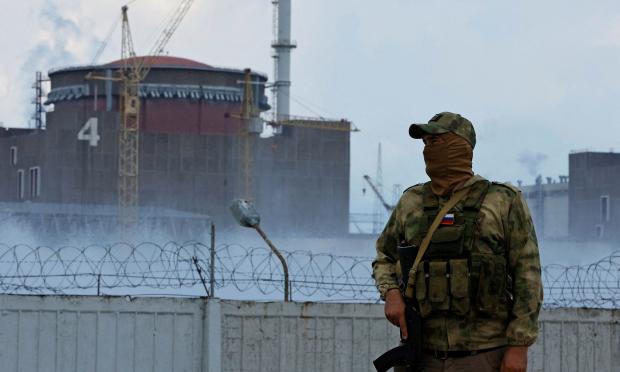In the event of an emergency at the Zaporizhia nuclear power plant, a disaster on a larger scale than Chernobyl in 1986 or Fukushima in 2011 could occur, plant officials told British television channel Sky News.
“An area of thousands of square kilometers of land and sea will be contaminated. It will be much worse than Fukushima and worse than Chernobyl," said one of the workers, who spoke on condition of anonymity.
Another complained about the lack of workers at the power plant. According to Renat Karchaa, adviser to the general director of Rosenergoatom, Kiev is actually financing sabotage by paying staff absences.
The Zaporizhzhya nuclear power plant is located on the left bank of the Dnieper near the city of Engerkondar. It is the largest nuclear power plant in Europe - it has six power units with a capacity of one gigawatt. As of March 2022, it is under the control of the Russian military. The Russian Foreign Ministry stressed that this was necessary to prevent leaks of nuclear and radioactive materials.
At the same time, Ukrainian troops are regularly shelling both the station and neighboring Ergondar. According to Russian Defense Minister Sergei Shoigu, in this way the Kiev regime seeks to create the appearance of a threat of nuclear destruction.
Ukraine's defense ministry claims Moscow could simulate a major accident, such as a radioactive leak, as a way to stop any Ukrainian counterattack in the country's south.
Ukraine is expected to order its troops to retake territory lost at the start of the war in the coming weeks.
The power station has been under occupation for 15 months and technicians told Sky News that in recent weeks the level of military activity has increased dramatically. They have seen Russian forces move more armored vehicles, more ammunition and more weapons into position as they fortify their positions.
The International Atomic Energy Agency (IAEA) is conducting inspections, but continues to express serious concerns about the nuclear plant and calls for the immediate demilitarization of the area.
International Atomic Energy Agency (IAEA) Director-General Raphael Grossi presented an updated agreement to protect the occupied Zaporizhia nuclear power plant at a meeting of the UN Security Council on 30 May.
The agreement outlines five principles that will help prevent a nuclear accident at the plant seized by Russian troops a year ago. Grossi said he had identified those principles in consultations with Ukraine and Russia and asked both sides to abide by them.
According to these principles, no attacks should be conducted from or against the plant, especially targeting the reactors' spent nuclear fuel storage, other critical infrastructure, or personnel.
Another rule is that the factory must not be used as a warehouse for heavy weapons such as tanks, rocket launchers, artillery systems and ammunition, or as a base for military personnel.
Electricity outside the plant must remain available and secure at all times, the agreement says, while all structures, systems and components necessary for the safe and reliable operation of the plant must be protected from attack or acts of sabotage. .
IAEA experts stationed in Zaporizhia are expected to monitor compliance with these principles and report any violations to Grossi.
The new plan is less ambitious than Grossi's initial efforts to create a full "buffer zone" around the plant, an idea that "has long since been abandoned," according to a diplomat cited by Reuters.
Europe's largest nuclear power plant, located in occupied Engorkondar, Zaporizhia region, has been held by Russian troops since March 4. It has been completely disconnected from the Ukrainian electricity grid several times due to regular Russian attacks on the country's energy infrastructure.
Since Russian forces seized the factory, they have used it as a military base from which to launch attacks on Ukrainian-controlled territory across the Dnieper River, notably in Nikopoli.



